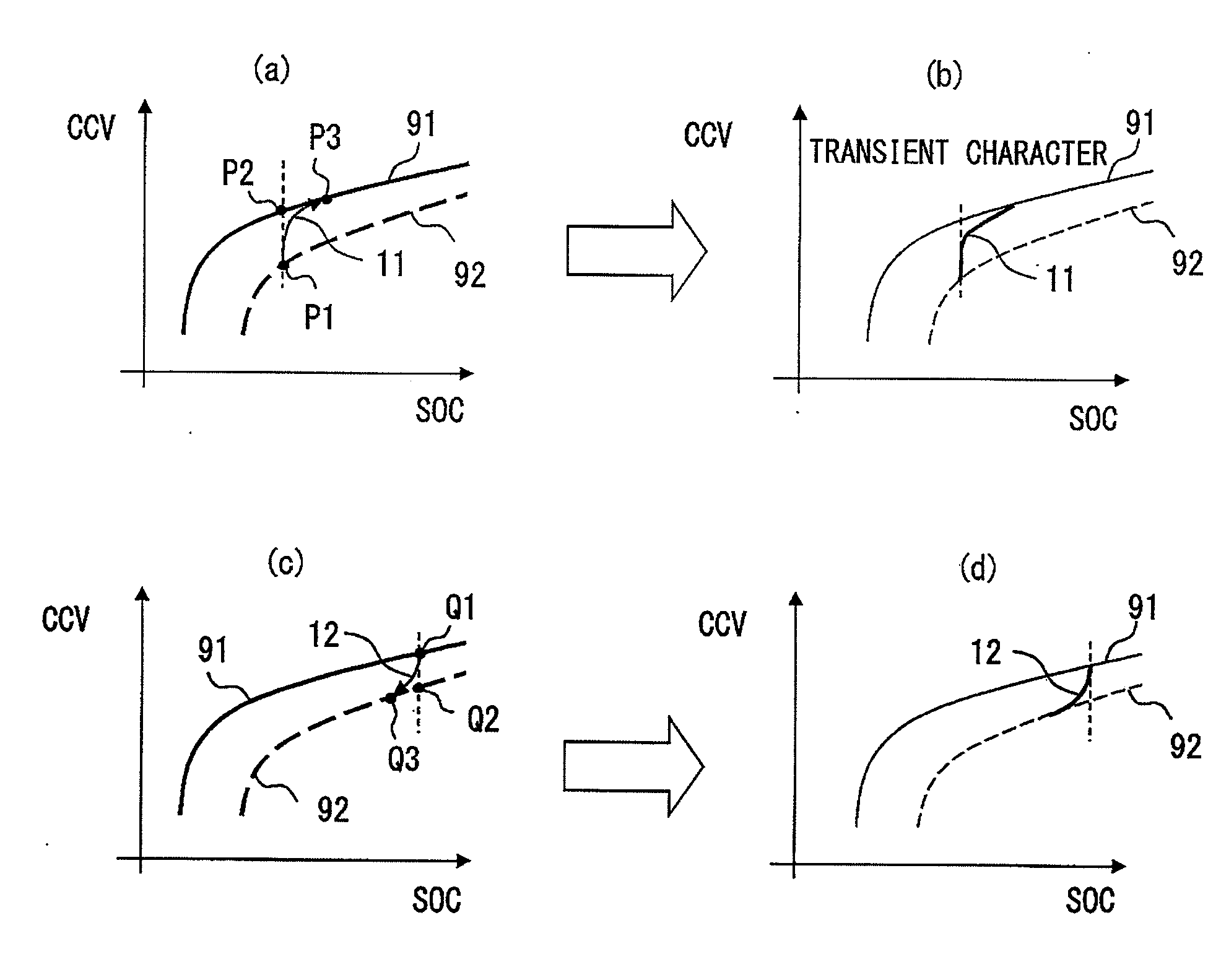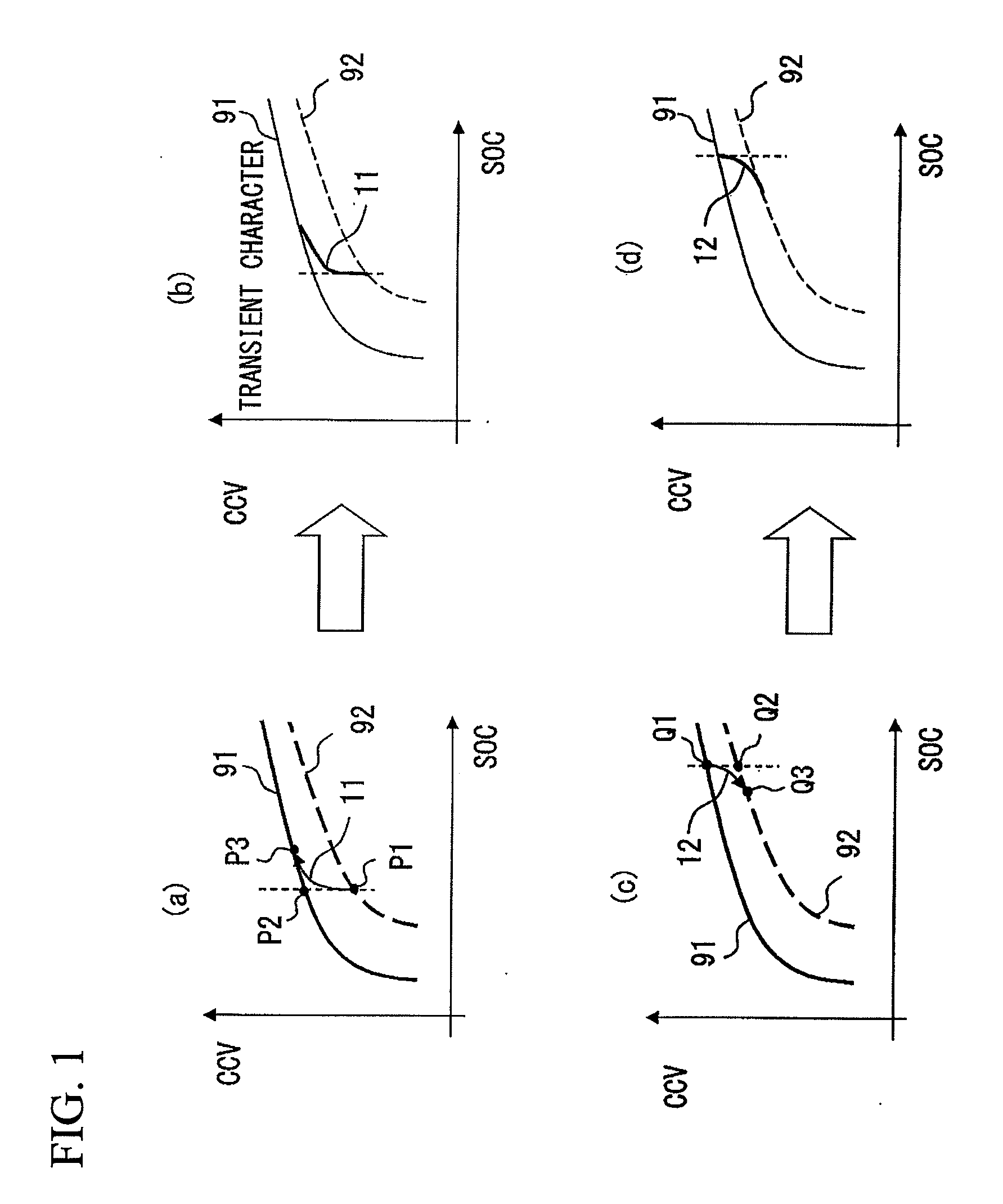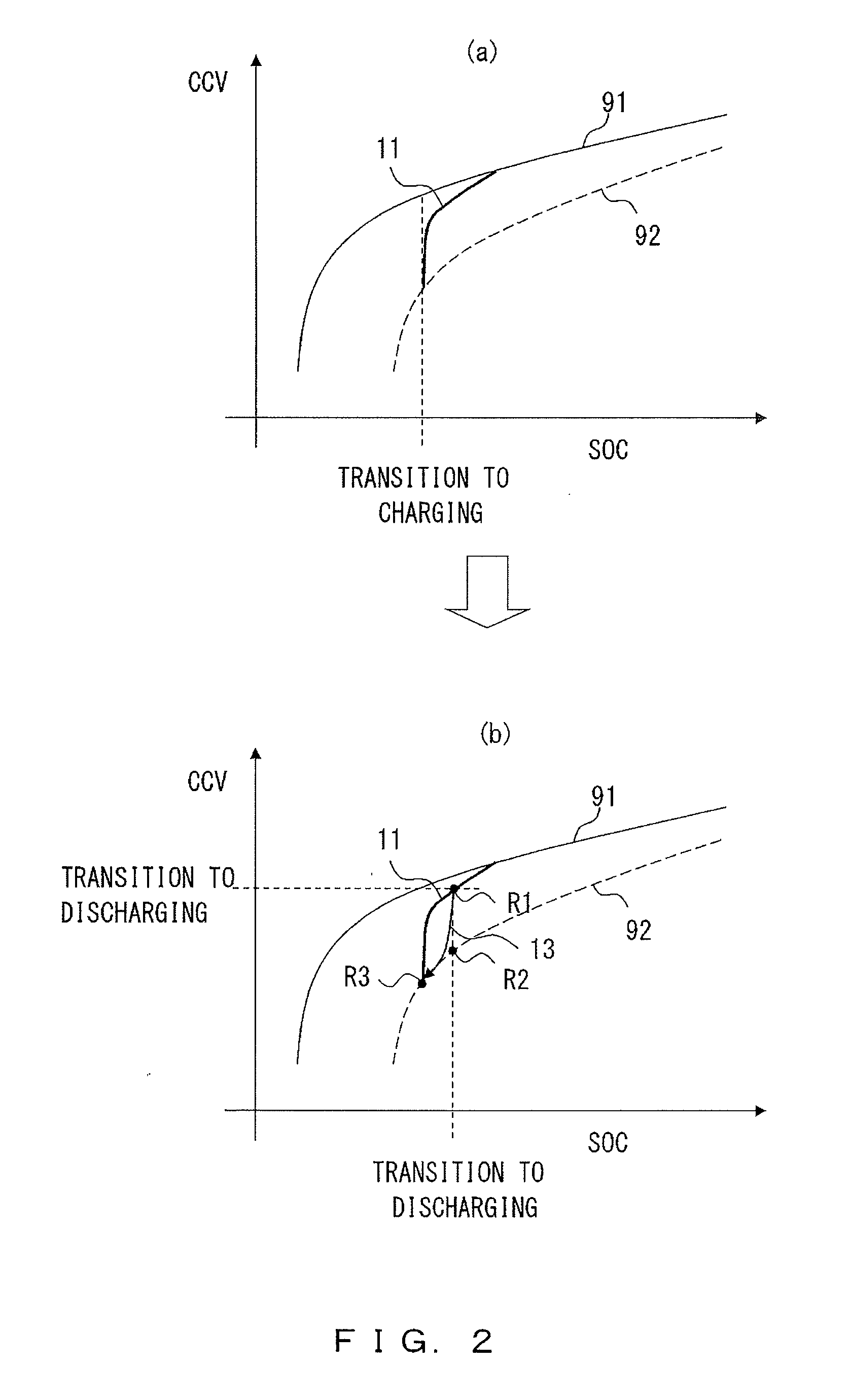Method and device for estimating remaining capacity of battery
- Summary
- Abstract
- Description
- Claims
- Application Information
AI Technical Summary
Benefits of technology
Problems solved by technology
Method used
Image
Examples
Embodiment Construction
[0028]The present invention generates, as a transient characteristic, a new SOC-CCV characteristic representing the correlation between the remaining capacity (SOC) and the Closed Circuit Voltage (CCV), the correlation transitioning from a point on one of the curves of the charging-side SOC-CCV characteristic 91 and the discharging-side SOC-CCV characteristic 92 to a point on the other of those curves when switching has occurred between the charging and the discharging of the battery so as to use the transient characteristic for the estimation of the remaining capacity (SOC).
[0029]FIG. 1 shows an example of generating of a transient characteristic in a case when switching has occurred between charging and discharging. The data of the charging-side SOC-CCV characteristic 91 shown in FIG. 1 is obtained by measuring the remaining capacity (SOC) while only conducting charging by flowing a prescribed current by using a charger in advance, and map data resulting from associating the remai...
PUM
 Login to View More
Login to View More Abstract
Description
Claims
Application Information
 Login to View More
Login to View More - R&D
- Intellectual Property
- Life Sciences
- Materials
- Tech Scout
- Unparalleled Data Quality
- Higher Quality Content
- 60% Fewer Hallucinations
Browse by: Latest US Patents, China's latest patents, Technical Efficacy Thesaurus, Application Domain, Technology Topic, Popular Technical Reports.
© 2025 PatSnap. All rights reserved.Legal|Privacy policy|Modern Slavery Act Transparency Statement|Sitemap|About US| Contact US: help@patsnap.com



